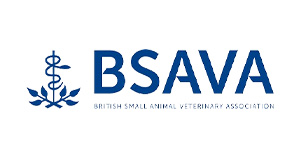Mobility Review
Published on: Mar 10, 2023
Whilst preparing for the final Shepton Top10 meeting of this season, I came across some previous mobility score benchmarking from 2012/13 – some of you will remember the Shepton Lameness Premier League.
In 2012, 33 farms signed up to the Lameness League, a project designed to reduce lameness in Shepton herds. All 33 farms had two mobility scores carried out; one at the start of the project and one 12 months later to measure progress.
The average mean Shepton herd mobility from this project in 2012 was 76% which was excellent at the time but within the scores there were quite a few outliers well above or below this. In comparison in 2022 the average herd mobility was 92% with little variation between the best and worst scores, as you can see below.
In 10 years, there has been some real progress improving our dairy herd mobility. As a practice our herds are well above the national lameness prevalence of 30% (70% mobility), but there is always scope to improve.
One way of measuring your herds mobility is scoring, which has two main roles on farm:
- To identify herd patterns, monitor treatment
outcomes and contract compliance. This is
usually carried out by a registered mobility
scorer (RoMS). - As a tool to implement EDPET. We all know
who our score 3 cows are as these are slow, but
to make real progress we need to identify score - Cows – those who have just become lame.
What is EDPET? Early Detection, Prompt,
Effective Treatment. This is one of the
cornerstones of managing foot health on any
farm. If any one of these steps is not carried out,
then EDPET fails.
Our Shepton Top10 Mobility Champion is Simon Wells of Camerton Farm. Simon’s mobility score is an exceptional 99%, but don’t be fooled – he works hard to achieve this. Part of this is down to diligently implementing EDPET on farm, identifying and treating lame cows within 48 hours of them becoming lame. Simon uses pain relief alongside trimming and blocks in treatment of feet, this means animals are more likely to recover. Alongside this, animals are foot bathed daily and receive routine foot checks/trimming twice a lactation from an external foot trimmer to
maintain a functional foot.
To prevent the development of new cases of lameness we need to manage the risk factors that lead to new case development. This will vary from farm to farm. Without reducing the rate of new cases, a farm will constantly have to work hard to maintain their level of mobility either through treatment and recovery or culling.
Looking at animals in their environment and their day-to-day routines alongside trimming and mobility records is the best way to understand what’s going on at a herd level. As an AHDB Mobility Mentor, these are some of the steps that are taken when assessing a herd’s mobility, these allow us to prioritise areas to focus on in the
farms action plan.

Author –
Rosie Lyle
Shepton Vets reviews 10 years of dairy cow mobility data, showing a significant increase from 76% to 92%. Learn about EDPET, lameness detection & farm management strategies.
dairy cow mobility | lameness in dairy cows | Shepton Lameness Premier League | Shepton Top10 Mobility Champion | EDPET for dairy cows | lameness detection in cows | dairy cow foot care | AHDB Mobility Mentor | Shepton Vets dairy farm advice











